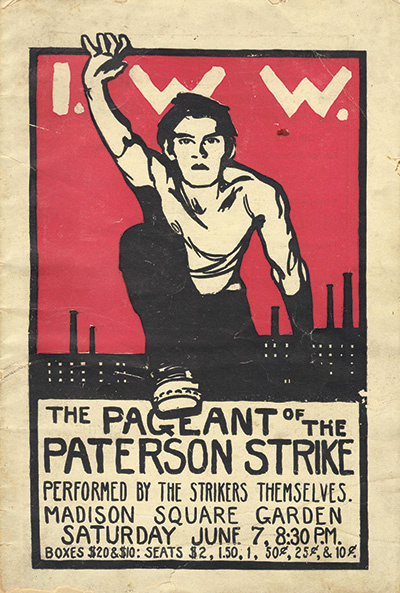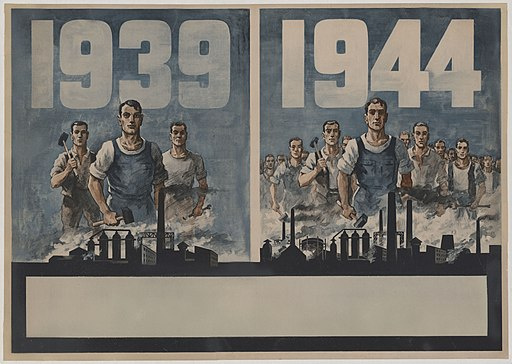By Celia Shea, communications staff
Buff dudes, restless newsboys, and manly farmers. For decades, they served as North America’s working-class mascots and marched off the pages of union posters, pamphlets and political cartoons straight into the collective imagination. But while these designs painted a clear vision of what working-class power could look like, they often failed to accurately represent workers by erasing two whole groups of people: namely, racialized workers and women.



March is Women’s History Month and as a union woman, looking at these early twentieth century depictions of workers, you’re probably wondering, where were all the women? The answer is: they were at work, and they were real revolutionaries, who led some of the coolest direct actions in the labour movement's rich history.
locals are involved; chapters are involved; and it’s evolving to be normal...that we talk about women’s issues and fight for women’s issues.”
AUPE’s Women’s Committee is dedicated to setting this historical record straight as well as amplifying women’s voices in the labour movement today. Their chair, AUPE Vice-President Susan Slade, says that in the 28 years she’s been a member, the committee has made great strides within the union.
“We have that ability now to advocate for women’s issues in a larger setting,” she says. “It’s not just set within the little committee that we have of eight people – locals are involved; chapters are involved; and it’s evolving to be normal...that we talk about women’s issues and fight for women’s issues.”
In fact, she says, the labour movement, in the public sector, really is a women’s movement. “A lot of the jobs that are done within the unionized environment are feminized jobs – they’re nursing, healthcare...they’re admins, other front-line government workers, like children’s advocates and k-12 education staff .” Every day, members challenge patriarchal power in the form of their bosses, who are disproportionately male.
But inequities within their own ranks also remain a challenge. The gender pay gap is one, and AUPE’s Pay and Social Equity Committee Chair, Vice-President Bonnie Gostola says closing it is a multi-step process.
“Women start behind the eight ball and throughout their lives, continue to be put behind the eight ball. Inequity of wages becomes a social inequity as we age through life as women,” Gostola says, giving the example that hourly wage inequities between men and women are only the start of the problem. Women also receive weaker pensions and are more likely to temporarily leave the workforce when they decide to raise a family. When they do “inequity is automatically created because you’re not there for the promotions, you’re not there to continue to build your name in a company.”
Women start behind the eight ball and throughout their lives, continue to be put behind the eight ball. Inequity of wages becomes a social inequity as we age through life as women.
By having a seat at the labour table, women challenge these injustices, and ultimately everyone benefits, because women rarely look out for only themselves. History shows they use their own fights to propel the whole labour movement and other social justice causes forward for all workers.
Driven by ingenuity, tenacity and compassion, even women who performed unpaid labour in the home led the charge for waged workers – like Hull’s heroines, a group of British housewives who fought in 1968 for safer working conditions for the town’s fishermen!
It’s time unions showcase this history and highlight the amazing achievements of working women, so here is a brief timeline of women-led actions spanning 1846 to 2020. (Spoiler alert: You might know some of the women highlighted in 2020. Scroll to the bottom to see how AUPE members drew national attention to the fight against privatized healthcare).
1864: Troy NY’s Collar Laundry Union members stick out their necks for all workers
Say hello to one of America’s first all-women unions! The Collar Laundry union represented hundreds of New York’s laundresses who earned next to nothing, working 12-14 hour days in stifling conditions. Washers, who spent the whole day with their hands submerged in harsh bleach and soap, earned the least. Starchers, who suffered serious burns from their work, made scant more, while ironers were at the top of the pay grid, which still represented a meagre income.
In February 1864, 300 of these change-making women resolved to walk off the job. They came from 14 different employers, and they demanded a 20 to 25 percent wage increase, as well as safety measures. Their brave and bold decision got the goods. Within 6 days, laundry owners across the city folded, and the women won their demands. For years after, they continued to pay it forward, even donating a thousand dollars to the Molders union when they were locked out, and by developing and organizing program to teach other women workers.
1920: Strike Looms over Columbia’s Textile Industry
One fateful day, in 1920, the women spinners employed in Bello Columbia’s booming textile industry decided to withhold their labour in protest of two issues women still face today: workplace sexual harassment and the gender pay gap. Some sources say that on the first day of the job action, their wildcat grew to an astounding 400 participants. By refusing to take their seat at the loom, they successfully jammed the employer’s profit-machine and even won the public’s sympathy, forcing the cloth barons to agree to most of their demands.
Source materials: https://translate.google.com/translate?hl=en&sl=es&u=https://www.bbc.com/mundo/noticias-51206269&prev=search&pto=aue
1937 - 1945: Cigar-Makers Smoke Out the Boss
1937: Labour unrest was an everyday occurrence in Detroit through the twentieth century. But what about the Polish immigrant women who ground the industrial city’s cigar production to a halt in the 1930s?
Their wave of sit-ins started with one group of non-unionized women at the Websten-Eisenlohr cigar factory. Tired of the rampant sexual harassment, massive wage cuts, and unrealistic production quotas suffered at the hands of rogue foremen and greedy factory owners, they decided to fight back by occupying the factory floor. Within days, five more groups of cigar-makers did the same.
But their battle with sexism didn’t end with the bosses. The all-boys club in the cigar unions of the American Federation of Labour rejected the women’s bid for membership. Language barriers, police brutality, ignorance: These women battled myriad challenges, but after a couple months of direct action, they successfully negotiated a collective agreement and walked out of the fire with a union of their own!
Source material: https://www.workers.org/2010/us/immigrant_women_0325/
1945: Less than ten years later, African-American women employed in Charleston’s cigar-making factories struck for better pay, anti-racist workplace policies, and medical benefits among other workplace improvements. Their labour representatives, such as Marie Hodges, were big advocates of cross-union solidarity and believed that if they could overcome racial divides within the union, they could win better working conditions for all!
But because many of their rank-and-file white coworkers remained stuck in their racism, it was mostly African-American women who ignited the strike and held the line for the first day of the job action, where they faced violent city police. Within a month though, support for the fight grew. More white workers hit the pavement, and together the staff won backpay.
Source material: http://ldhi.library.cofc.edu/exhibits/show/cigar_factory/the_charleston_strike
1971: Single Moms in Vancouver derail CN
The shop-floor isn’t the only place the working class must bare its teeth and organize. For the Militant Mothers of Vancouver’s Raymur Housing Project, the terrain of struggle was their own backyard, where the CN rail-line blocked their kids’ path to school.
Twice, these mostly single mothers lined themselves along the railroad and impeded CN’s operations. They demanded that the company and the government put children before profit. The second time they hit the tracks, they pitched tents and held the line for two days and three nights. Their blockade successfully interrupted the company’s business, and eventually, the women pleaded their case in court, where the province agreed to build a pedestrian overpass over the railroad for safe passage.
1978: Women Auto-Workers change the industry's culture forever
Below-freezing factories, flooded shop floors, and limb-busting machines aren’t just a thing of the Industrial Revolution. These were some of the working conditions in Ontario’s Fleck auto-wiring plant in 1978, the same year its 96 percent women workforce waged a high-profile fight against the boss.
They had just voted to join the former United Auto Workers (UAW)to negotiate better working conditions. But bargaining quickly broke down when the employer refused to include the Rand Formula, which ensures all staff who join a bargaining unit pay a small due to fund the union and its protections.
Despite the extreme attempts to break the picket line, with riot police and school buses full of scabs, the struggle ended with a collective agreement – the UAW’s first to contain gender-specific protections! By using their bargaining rights to advance women’s rights, these brave women changed the culture of the UAW forever.
1995: AUPE laundry workers are sick of Klein
Better known as the event that made former Alberta Premier Ralph Klein blink, the laundry workers’ strike of 1995 has gone down in our province’s history as one of the most celebrated Dave and Goliath moments. During the 1990s, Klein sold Alberta right out from under the people who called it home, as the government privatized one service after the other.
But by the time the Premier got to hospital laundry services in Calgary, Albertans were mad. The day after the Health Authority announced the proposed sale, 60 laundry workers, mostly immigrant woman, called in sick to work. Their brave decision sparked mass action. Within a week, picket lines numbered 2,500 at six hospitals and nine long term care facilities. And with the public on their side, these laundry workers won – for the first time during his reign, Klein retreated and delayed one his privatization schemes.
2006: Egypt’s textile workers sow solidarity
In 2006, Egyptian public-sector textile staff at the Mahalla al-Kubra’s Misr Spinning and Weaving Company staged a mass walkout when their employer (the government) refused to pay a bonus it had promised. Women led the charge, and not only had to keep pressure on the boss, but also on their male coworkers who crossed the picket line. At one point, 3,000 women surrounded their brothers, chanting, “Where are the men? Here are the women!” The tactic worked, and the direct action grew; eventually, the government caved and offered the workers an even better deal than they’d originally tabled.
2011-2016: Cambodia’s Beer Marketers Turn off the Taps
These women don’t quit! In the early 2000’s, Cambrew’s beer marketers – the women who promote Angkor beer – took direct action multiple times in order to get the respect they deserved from the brewer.
In 2011, the women organized a strike to fight for overtime and to stop the bosses from targeting staff for participating in union activities. Across Cambodia, bars boycotted Angkor beer in support of the women workers, whose voice travelled all the way to Sweden, where labour groups condemned Cambrew and demanded they respect the beer promoters. The women won their fight for overtime. Later in 2016, they struck again to combat Cambrew’s precarious, high turn-over culture, which they fuelled with short, six-month contracts.
2021: AUPE GSS healthcare members fight private healthcare
Just last year, at the height of the global coronavirus pandemic, hundreds of AUPE’s own general support services staff from over 40 hospitals and healthcare centres across Alberta dropped everything to protest the provincial government’s scheme to contract-out 11,000 healthcare jobs during the biggest health crisis of the century.
While members of all genders participated in the wildcat that spread from the cities to small towns in a short 14-hour period, about 78 percent of all public-sector GSS members are women, performing labour long dismissed as “women’s work.” Because women disproportionately work for free to do the cleaning, cooking, and caregiving that allows families all over the world to thrive, bosses continue to underpay and undervalue them to this day.
While the Alberta government hasn’t reneged its decision to sell-off the public-sector's GSS jobs to profit-makers, AUPE’s member-led 2020 wildcat strike drew national attention to the plights and the power of some of the province’s lowest paid public healthcare heroes, as well as the threat of privatization.
Who’s next?
This timeline doesn’t even begin to cover all the outstanding moves women workers have made, never mind the next steps you will take in the future, but it’s a start. These events probably come as no surprise to AUPE members; almost eighty percent of you are women, making you the strongest democratic muscle in the membership. With your awe-inspiring people power, we know whatever you decide to build next is bound to be great!


